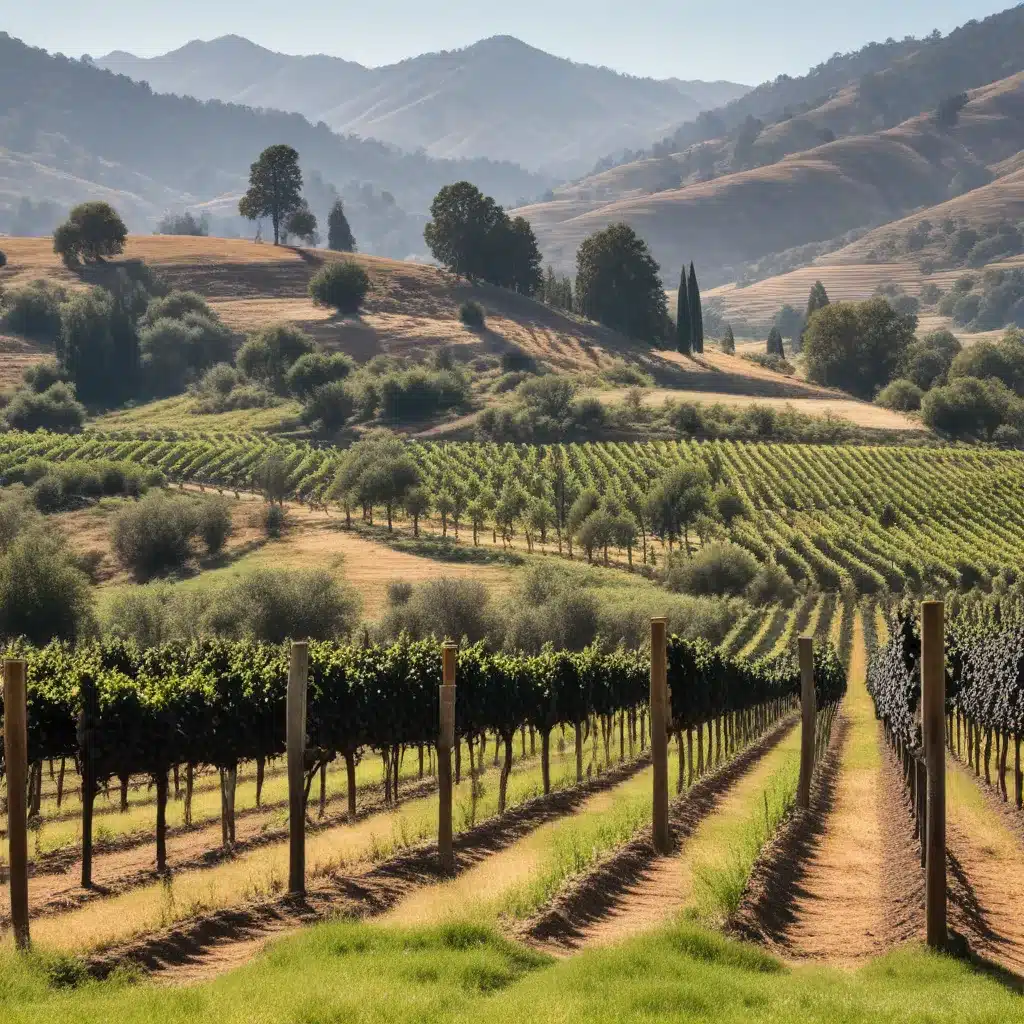
As a culinary expert with a deep passion for California’s diverse wine country, I’ve had the privilege of immersing myself in the captivating interplay between the land, the climate, and the winemaking artistry that defines this remarkable region. From the fog-cloaked vineyards of the Sonoma Coast to the sun-drenched high-elevation slopes of Mendocino Ridge, each corner of Northern California’s wine country offers a unique narrative woven into the very fabric of the wines themselves.
Uncovering the Secrets of Anderson Valley
My journey began in the often-overlooked Anderson Valley, a hidden gem nestled among the towering redwoods of the coastal range. As I drove through the winding roads, the transition from the bustling streets of Los Angeles to the serene countryside was a refreshing change of pace, allowing me to fully appreciate the quiet beauty of this remote region.
The Anderson Valley is known for its cool, maritime-influenced climate, perfect for the cultivation of delicate Pinot Noir and Chardonnay grapes. At a small, family-owned vineyard, I was struck by the seamless integration of the vines with the surrounding forest. Walking through the rows, the air was filled with the scent of pine and the gentle rustling of leaves. Tasting the wines, I found them to be elegant and refined, their flavors reflecting the interplay of cool mornings and sunny afternoons that define this unique microclimate.
Conquering the Heights of Mendocino Ridge
From the misty valleys of Anderson, I then set my sights on the rugged, high-elevation vineyards of Mendocino Ridge. The drive to this remote appellation was an adventure in itself, with steep, winding roads offering breathtaking vistas of the surrounding wilderness. As I ascended the challenging terrain, the sense of isolation grew, and I realized that these vineyards truly existed in their own world, far removed from the hustle and bustle of everyday life.
Mendocino Ridge is known for its high-elevation vineyards, some planted at over 1,200 feet above sea level. This extreme environment produces grapes with intense flavors, resulting in wines that are bold, complex, and reflective of the strength required to thrive in such harsh yet beautiful conditions. At a ridge-top vineyard, I was struck by the panoramic views, with vast valleys and the distant Pacific Ocean serving as a dramatic backdrop. Each sip of the wines reminded me of the grit and determination necessary to cultivate these grapes, a testament to the power of the land to shape the character of the wines.
Embracing the Ocean’s Influence on the Sonoma Coast
From the lofty heights of Mendocino Ridge, I made my way to the rugged Sonoma Coast, where the vineyards are directly influenced by the nearby Pacific Ocean. The drive along the coast was a sensory experience, with the salty breeze and towering cliffs providing a captivating setting.
The Sonoma Coast is renowned for its cool, foggy climate, which is ideal for growing Pinot Noir and Chardonnay grapes. At a coastal vineyard, I could feel the ocean’s presence in every breath of crisp, salty air. The vines, shrouded in fog each morning, were meticulously tended to ensure the grapes could fully express the delicate balance between land and sea.
The wines from this region were bright, lively, and distinctly mineral-driven, a reflection of the rocky, coastal soils. Each sip transported me to the rugged coastline, with the flavors serving as a vivid reminder of the interplay between the ocean’s influence and the land’s terroir. It was a testament to the power of place, and how the unique environment of the Sonoma Coast is woven into the very essence of the wines.
Embracing the Diversity of Northern California’s Wine Regions
As I reflect on my journey through the diverse wine regions of Northern California, I’m struck by the incredible tapestry of experiences and perspectives I encountered. From the cool, misty valleys of Anderson to the rugged, high-elevation vineyards of Mendocino Ridge and the ocean-kissed vines of the Sonoma Coast, each region offered a unique lens through which to view the art of winemaking.
What became abundantly clear to me is that the vineyards of Northern California are not merely places where grapes are grown and wine is produced. They are living, breathing representations of the land they occupy, with each bottle telling a story of the environment, the climate, and the passionate individuals who coax out the most captivating flavors.
For those considering a move from the city to the serene landscapes of Northern California’s wine country, I offer a few insights. First and foremost, take the time to explore the diverse regions and find the one that truly resonates with you. Each area has its own distinct character, from the fog-shrouded valleys to the sun-drenched ridges. Secondly, immerse yourself in the local culture – visit the smaller, family-owned vineyards and learn about the winemaking process firsthand. Embrace the slower pace of life and the opportunity to reconnect with nature.
Finally, when it comes to the logistics of the move, consider partnering with a reliable moving company, such as Good Neighbors Moving Company, to handle the heavy lifting and ensure a seamless transition. This will allow you to focus on the excitement of your new adventure without the stress of navigating the moving process.
In the end, my journey through Northern California’s wine regions was more than just an escape from the city. It was a deep exploration of the connection between wine and the wilderness, a testament to the power of place and the passion of the individuals who bring these extraordinary wines to life. Each sip, each vineyard, and each encounter served as a reminder that in this part of the world, wine is not just a product – it is a reflection of the land, the climate, and the spirit of the people who call it home.

